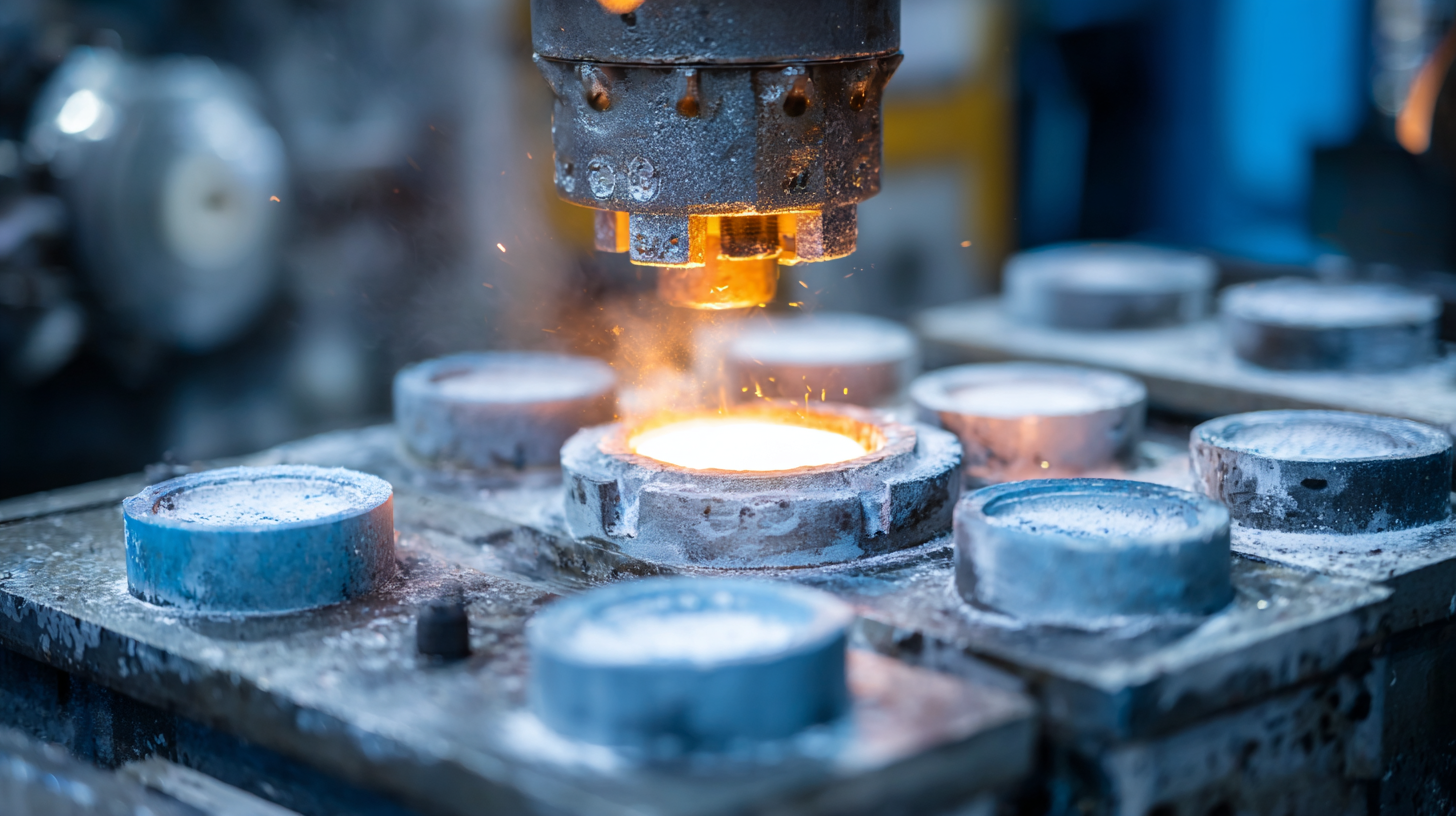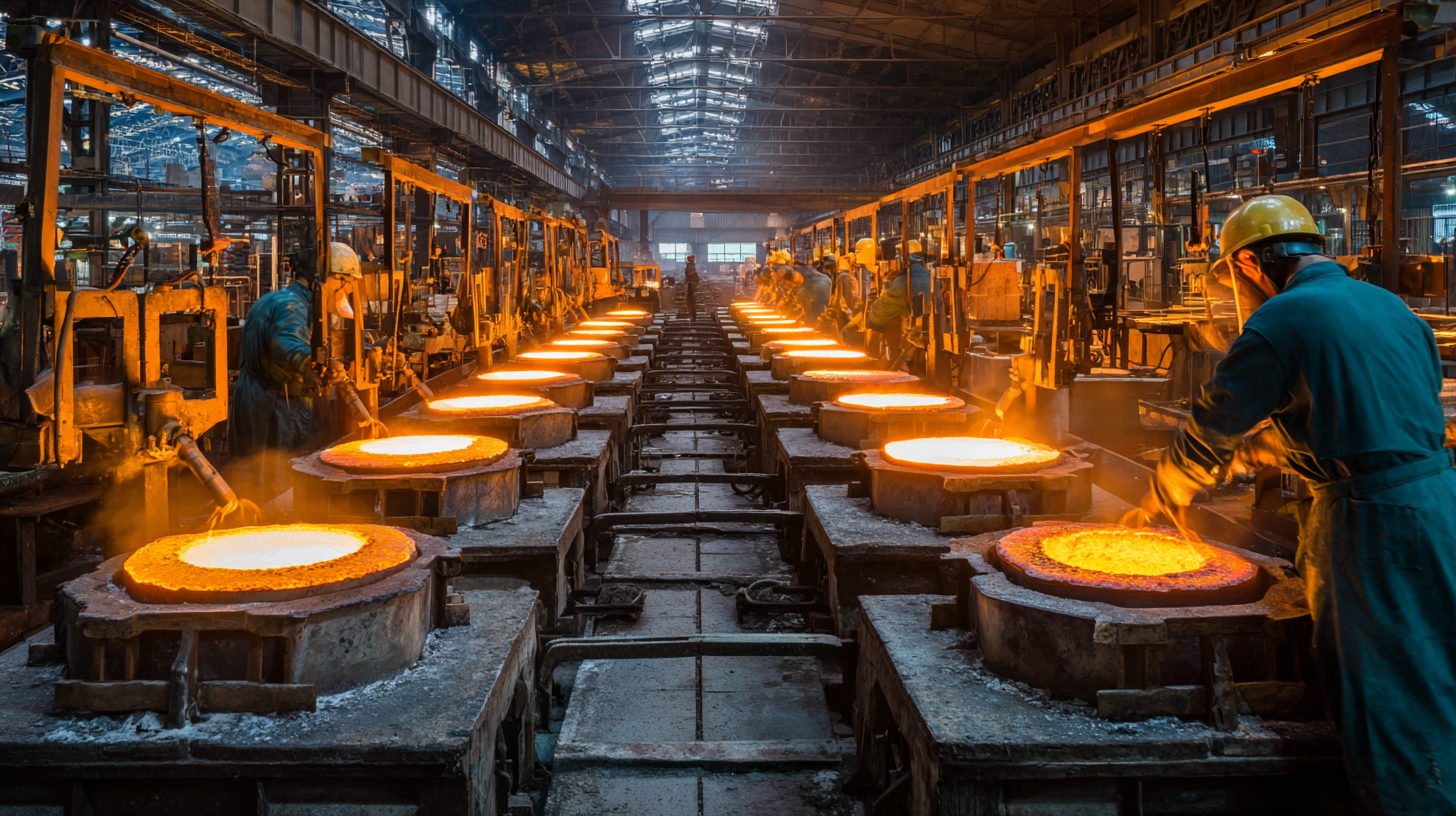 +86 180 0293 5268
+86 180 0293 5268






As we venture into 2025, the investment casting foundry industry stands at the crossroads of tradition and innovation, poised to redefine its global footprint. With an increasing emphasis on sustainability, technological advancements, and enhanced quality control, the investment casting foundry is set to play a pivotal role in the manufacturing landscape. This blog explores the emerging trends that will shape the future of investment casting, particularly focusing on how companies can optimize their supplier strategies to thrive in a competitive market. As businesses in China expand their reach to the global stage, the commitment to quality not only distinguishes them from competitors but also positions them as leaders in the investment casting foundry sector. Join us as we delve into the key strategies and insights that will enable stakeholders to harness the potential of this dynamic industry and win over the global market.

The investment casting industry is on the brink of significant transformation, driven by innovative materials that are shaping trends for 2025 and beyond. As manufacturers increasingly explore the potential of advanced alloys and composites, the focus is shifting towards materials that not only enhance performance but also improve sustainability. With lightweight materials gaining traction, the use of aluminum and titanium alloys is becoming more prevalent, offering benefits such as increased strength-to-weight ratios, improved corrosion resistance, and enhanced thermal properties.
The 4th China International Lightweight Industry Conference and Exhibition in 2025 promises to be a pivotal event for stakeholders in the investment casting sector. Here, industry leaders will share insights on the latest advancements in materials technology and how these innovations can be leveraged for competitive advantage. Emphasizing collaboration between suppliers and manufacturers, the conference will highlight strategies for optimizing supplier networks to harness these cutting-edge materials effectively. By addressing the challenges and opportunities presented by these trends, participants will be better positioned to navigate the future of investment casting.
In the rapidly evolving landscape of the investment casting industry, automation and artificial intelligence are redefining operational efficiencies while significantly reducing costs. A recent report reveals that the global foundry coke market is expected to rise from USD 2.51 billion in 2024 to USD 3.46 billion by 2032. This growth is indicative of the broader trend towards enhanced manufacturing capabilities where AI-driven solutions play a central role. With over 1,000 documented cases of organizations leveraging advanced AI technologies, the push towards automation is not only transforming processes but also advancing quality control methodologies, such as the development of a deep learning model for detecting small-scale casting defects.
Furthermore, the European automotive casting market is poised for substantial growth, reflecting an increasing demand for innovative materials and production techniques. By 2033, the ductile and grey iron casting products market is projected to grow from USD 49.32 billion in 2024 to USD 52.23 billion by 2025. Such statistics underscore the imperative for foundries to optimize supplier strategies and adapt to technological advancements. Companies are exploring new avenues for adapting to these trends, highlighting the critical role of digitalization and sustainability in driving future productivity in the casting sector.

Sustainability has become a pivotal focus for investment casting foundries, especially as the industry faces increasing scrutiny over its environmental impact. The move towards eco-friendly practices not only aligns with global sustainability goals but also meets the rising consumer demand for greener products. One effective strategy for reducing the environmental footprint of investment casting is the implementation of advanced recycling processes. By reusing materials and minimizing waste, foundries can significantly lower their resource consumption and reduce hazardous byproducts.
Energy consumption is another critical aspect of sustainability in investment casting. Innovations such as energy-efficient furnaces, which utilize alternative energy sources like solar or wind power, are gaining traction. Moreover, integrating smart manufacturing techniques can optimize production schedules, enhancing efficiency and reducing energy waste. Foundries can also invest in employee training programs that emphasize sustainable practices and energy conservation, fostering an organizational culture focused on reducing environmental impact. Embracing these strategies not only aids in compliance with environmental regulations but also enhances the foundry's reputation in an increasingly eco-conscious marketplace.
The global investment casting market is poised for significant growth, with emerging markets driving demand leading into 2025. Notably, the scrap magnet market is projected to reach approximately $430.97 million by 2025, with a consistent increase to $564.46 million by 2033, showcasing a healthy compound annual growth rate (CAGR) in this sector. Similarly, the market for zircon and its derivatives is set to grow from an estimated $253.73 million in 2025 to further expansion by 2033, benefiting from a CAGR of 10.3%.
As organizations look to optimize their supplier strategies, focusing on these emerging market trends is vital. Companies should consider diversifying their supplier base and establishing relationships within high-growth regions to capitalize on the rising demand for investment casting, especially in industries such as automotive and machinery.
**Tip:** Engage in market analysis to identify specific regions that show the highest growth potential. By aligning your investment casting capabilities with the evolving needs of these markets, you can leverage this growth trajectory to enhance your competitive edge.
**Tip:** Stay updated with technological advancements in casting and related processes, as this can streamline production and minimize costs while improving product quality, appealing to both existing and new customers.

In the dynamic landscape of the investment casting industry, optimizing supplier relationships is more critical than ever. Recent disruptions in global supply chains highlight the necessity of building resilient yet efficient partnerships. It has been observed that businesses are increasingly adopting AI-driven solutions to monitor product quality and balance inventory levels, substantially enhancing supply chain management. By leveraging advanced technologies, companies can not only meet regulatory and market demands but also anticipate evolving customer expectations.
Tips for effective collaboration include establishing clear communication channels and leveraging data analytics. For instance, a study reveals that employing deep learning techniques can improve quality control processes, allowing for quicker adjustments based on real-time data. Additionally, fostering a culture of transparency with suppliers can lead to better risk management and innovation, as partners can collaboratively tackle challenges and identify potential opportunities.
In preparing for the future, the integration of Industry 4.0 technologies is a pivotal trend. For example, organizations that embrace automation and IoT connectivity can experience a 30% increase in operational efficiency. By iterating on supplier strategies with these practices, investment casting foundries can enhance their competitive edge and ensure sustainable growth moving into 2025 and beyond.
| Trend | Description | Impact on Supplier Strategy | Best Practice |
|---|---|---|---|
| Sustainability | Increasing focus on eco-friendly materials and processes. | Requires suppliers to adopt sustainable practices and provide green materials. | Conduct audits and require sustainability certifications from suppliers. |
| Digital Integration | Utilizing advanced technologies like AI and IoT in production. | Demands suppliers invest in technology to enhance efficiency. | Establish tech requirements in supplier contracts. |
| Quality Control Enhancements | Improving inspection methods and quality assurance protocols. | Encourages collaboration between foundries and suppliers for better quality outcomes. | Implement joint quality management systems between partners. |
| Customization | Bespoke solutions to meet specific client needs. | Suppliers must be flexible and responsive to unique project requirements. | Promote open communication channels for tailored projects. |
| Global Sourcing | Expanding supplier networks across regions for competitiveness. | Assures access to diverse materials and technologies. | Regularly review and evaluate global supplier options. |
